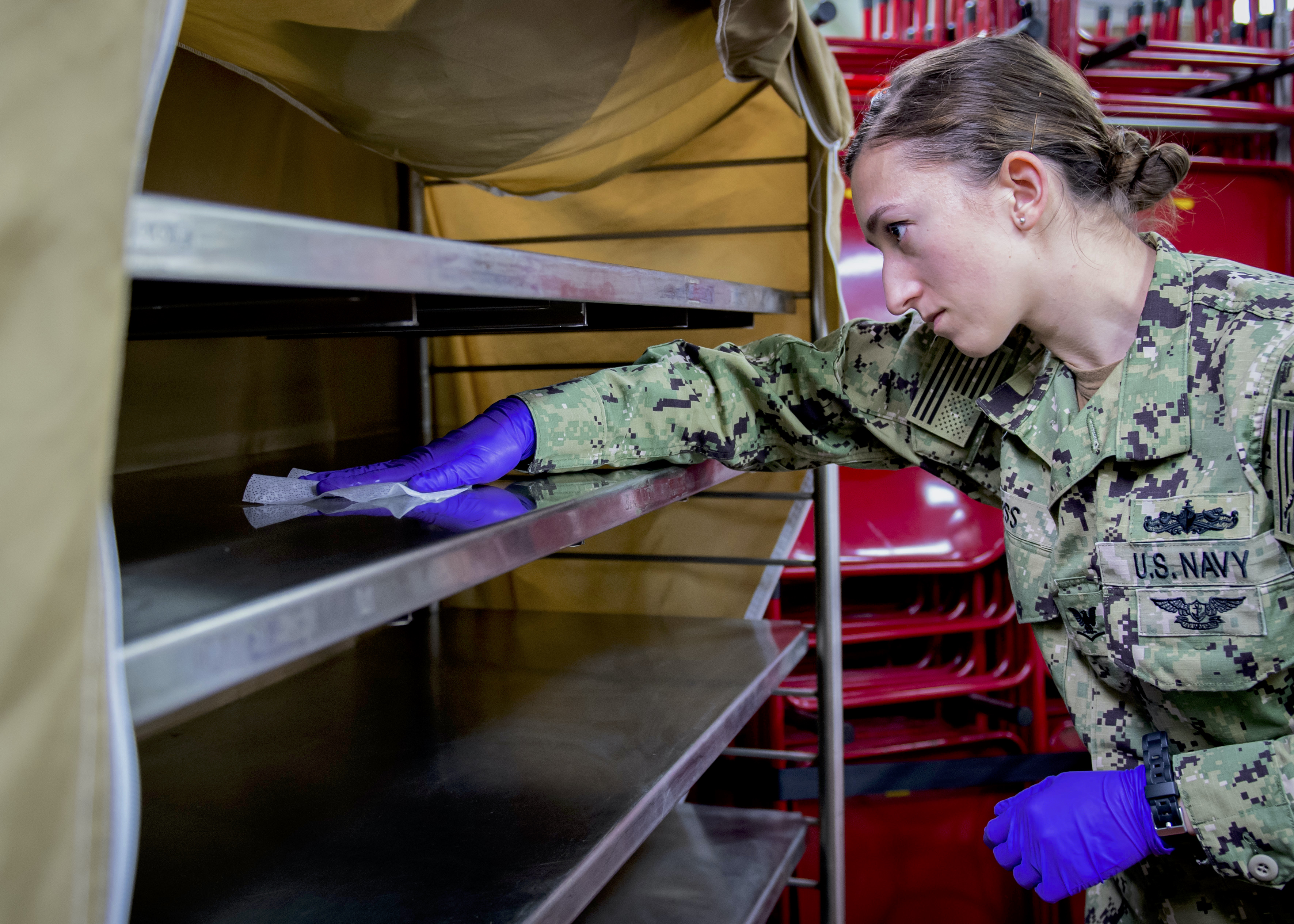
SAN DIEGO — A day after pulling into its temporary home in the port of Los Angeles the hospital ship USNS Mercy (T-AH-19) Is ready to receive patients and take the pressure off local civilian hospitals inundated by the coronavirus.
“We are open for business today,” Capt. John Rotruck told USNI News by phone Saturday from the ship. Rotruck commands the Medical Treatment Facility that’s staffed by more than 800 Navy medical and support personnel from 22 commands.
Mercy arrived Friday morning to the Los Angeles cruise ship terminal in San Pedro, Calif., for a mission of undetermined length. The Federal Emergency Management Agency has the lead in the COVID-19 domestic support, a multi-agency effort that includes state and local medical and emergency services authorities in Los Angeles County.
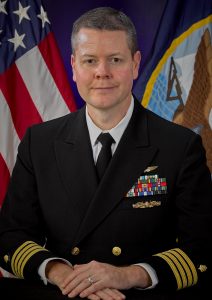
The plan is for the ship’s medical staff and 1,000-bed hospital facility to treat and provide care for non-COVID-19 adult patients, a move that would enable local hospitals to better focus treatment and care for those infected with the virus.
“We’re going to take patients as an inter-hospital transfer… patients who were already admitted to a local hospital will be transferred directly from that hospital to Mercy by ground ambulance,” Rotruck said. “There’s an acceptance process to make sure the local hospital is transferring patients that we have the capability to provide care for. Of course, that includes direct physician-to-physician contact to cement that we do in fact have the capability to provide safe, high-quality care for the patient they want to send.”
As of midday Saturday, the county reported 1,804 confirmed cases and 32 deaths, with 601 new cases just in the previous two days.
“Once that link is made, the patient will come by ground transport here and be admitted either to our intensive care unit or one of our wards, depending on what their level of acuity is,” he said.
The determination of patient transfers to the Mercy will be made at Los Angeles County’s multi-agency Medical Alert Center at the county’s emergency services offices in Santa Fe Springs, Calif. The MAC, which is staffed 24/7, is responsible for the round-the-clock coordination of patient transfers between private and county-operated hospitals and tracks the availability of hospital beds and status of patients from emergency calls, according to the county’s EMS website.
Now in the system, Mercy becomes another hospital in that network of facilities already established for the transfer of patients.
Mercy had not received patients, as of late afternoon Saturday. “We are certainly willing, ready and able to take a patient if they meet the criteria for care that we can provide,” Rotruck said. “We’d certainly love to start offloading for the local hospitals as early as today to try to help them open up their capacity.”
How Mercy Will Treat Patients
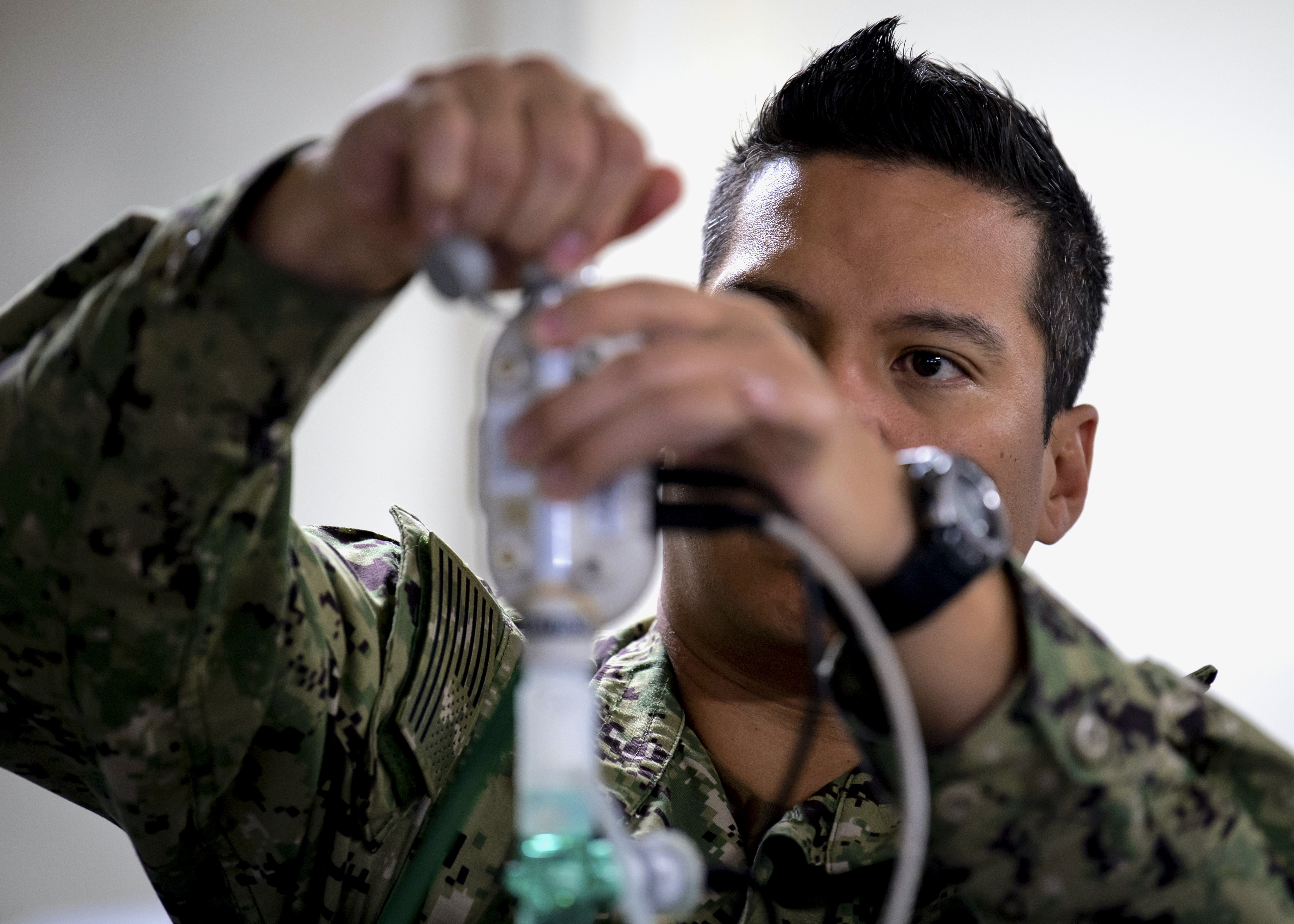
A two-person liaison team from Mercy is assigned and working at the Medical Alert Center. The liaison will do an initial screening of the patient to make sure that they “would be a suitable candidate for transfer,” Rotruck said. If so, “we would arrange for the physician-to-physician conference between the transferring hospital and the Mercy.” Approved patients then are transported by ambulance to the pier.
A medical shore detachment, set up outside Mercy at the pier, receive the patient from the ambulance crew. They’ll check that everything’s in order, he said, “and make sure the patient is stable at that moment, especially for a critically-ill patient. Then they will transfer the patient to the inside of the skin of the Mercy, but there won’t be any physical contact between the receiving team that is outside of the ship and receiving team that is inside the ship.”
“They’ll be able to maintain social distancing from each other, so there’s no risk of potential COVID exposure” between the outside and inside of the ship, he added.
Mercy, FEMA and state and local authorities have agreed on the COVID-19 screening criteria to determine which patients will be transferred to the ship. “That screening will happen at the transferring hospital first,” Rotruck said. “If the patient fails the screening, they won’t be eligible for transfer” to the ship. “They would only be tested for COVID if it’s indicated based on their clinical scenario. But they will all be screened for COVID-19,” he added.
Before Mercy left San Diego, the entire MTF and ship’s crew were screened for the COVID-19 virus.
“If somebody had symptoms, they wouldn’t be allowed on board in the first place before we left San Diego,” Rotruck said. “If we have any personnel join us here in Los Angeles, they will be screened prior to coming aboard. If they fail a screening questionnaire, they won’t be allowed entrance to the ship.”
If a patient brought to the ship is later suspected of having the COVID infection or tests positive for the virus infection, he said, “we would look to isolate them in the immediate term, making sure that their medical needs are being met. We already have the agreement of local hospitals that we would transfer that patient back to their parent hospital.”
“We would look to get them off the ship at the earliest opportunity,” he added.
Capabilities Aboard
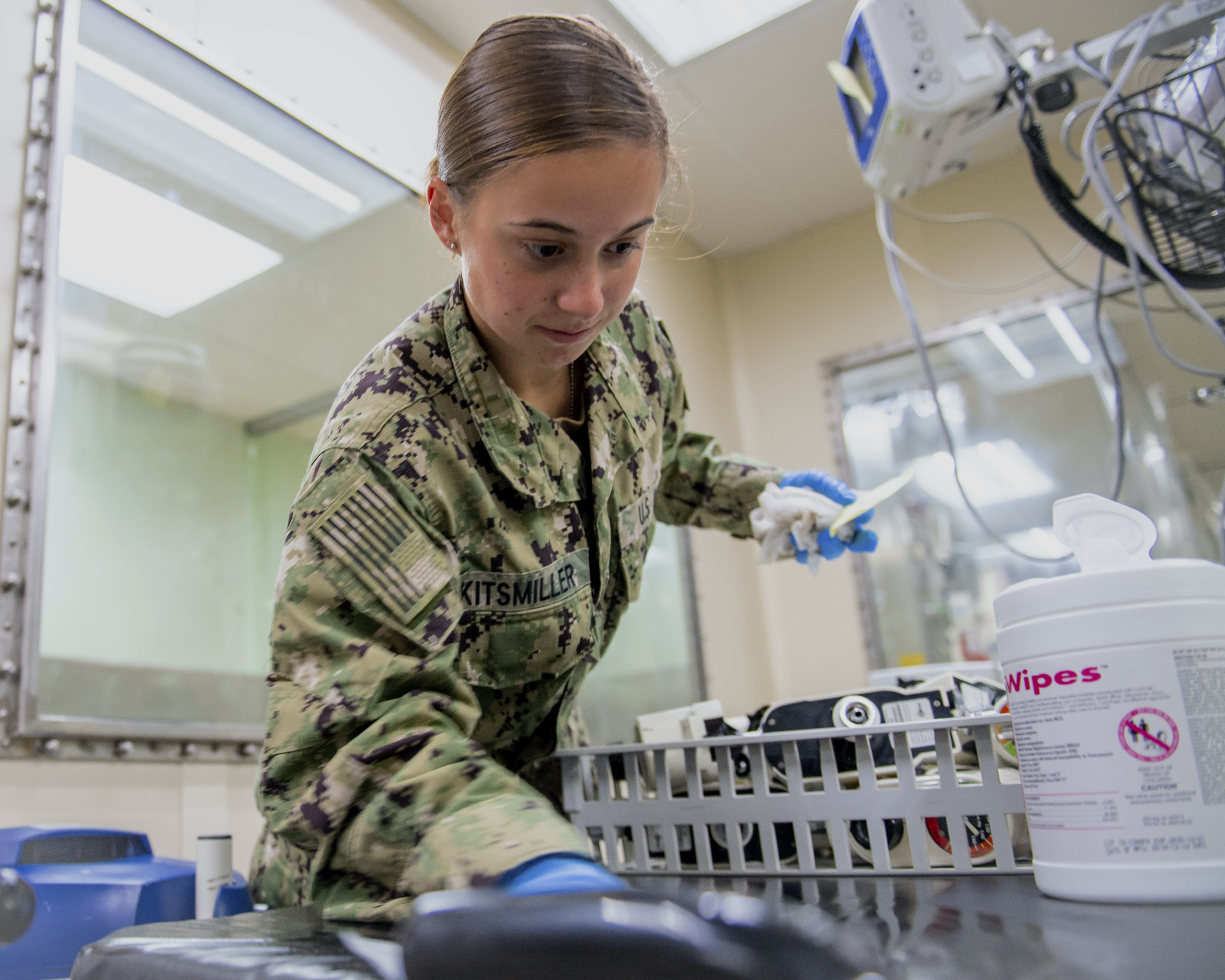
Mercy’s medical treatment facility includes 12 fully-equipped operating rooms; a pharmacy; medical, radiology and optometry labs; and two oxygen-producing plants, according to the Navy. More than 800 Navy personnel, including several dozen reservists, comprise the MTF, and that number could grow depending on requirements as the support mission moves ahead. “We’re going to add some more personnel to increase our capability to ramp up, but we have plenty of folks to get started here,” Rotruck said.
The medical teams include general surgeons, orthopedists, vascular surgeons, neurosurgeons and ophthalmologists. “We offer a pretty broad range of medical and surgical critical specialties – for adults,” he said. “We’re not doing obstetric care and we’re not doing pediatric care.”
There are other limitations. They can’t do open-heart or bypass surgery and can’t treat patients undergoing chemotherapy, “but we can do most other things here,” he added.
“Our operating rooms are very, very capably equipped. We have a full interventional radiology suite that’s comparable to anything you’d see in a brick-and-mortar hospital, and we have the people to do those procedures, not just the equipment. So I think we are pretty robustly equipped and staffed for this mission to provide a broad range of specialty care.”
While Mercy has deployed overseas to provide care and train with foreign medical and health providers, this mission is a deployment very close to home and focused on patient care.
“L.A. does not need us to tell them how to practice medicine. They’ve got that nicely wired,” Rotruck said. “That’s sort of the difference between the mission we do overseas and what we do over here. We literally are taking patients that were in hospitals, bringing them to our ship, which is a hospital, and trying essentially to relieve some of the burden from the local hospitals, to act as a release valve so they can focus their energy and their resources on COVID-19 patients.”
It’s unclear how long Mercy will remain in Los Angeles and whether it would be diverted to another port. “We are here… basically as long as FEMA and the state of California deem that it’s a value-added proposition for them,” Rotruck said. “We are here to serve and happy to be here. When they tell us, they don’t need us anymore, we will set sail.”
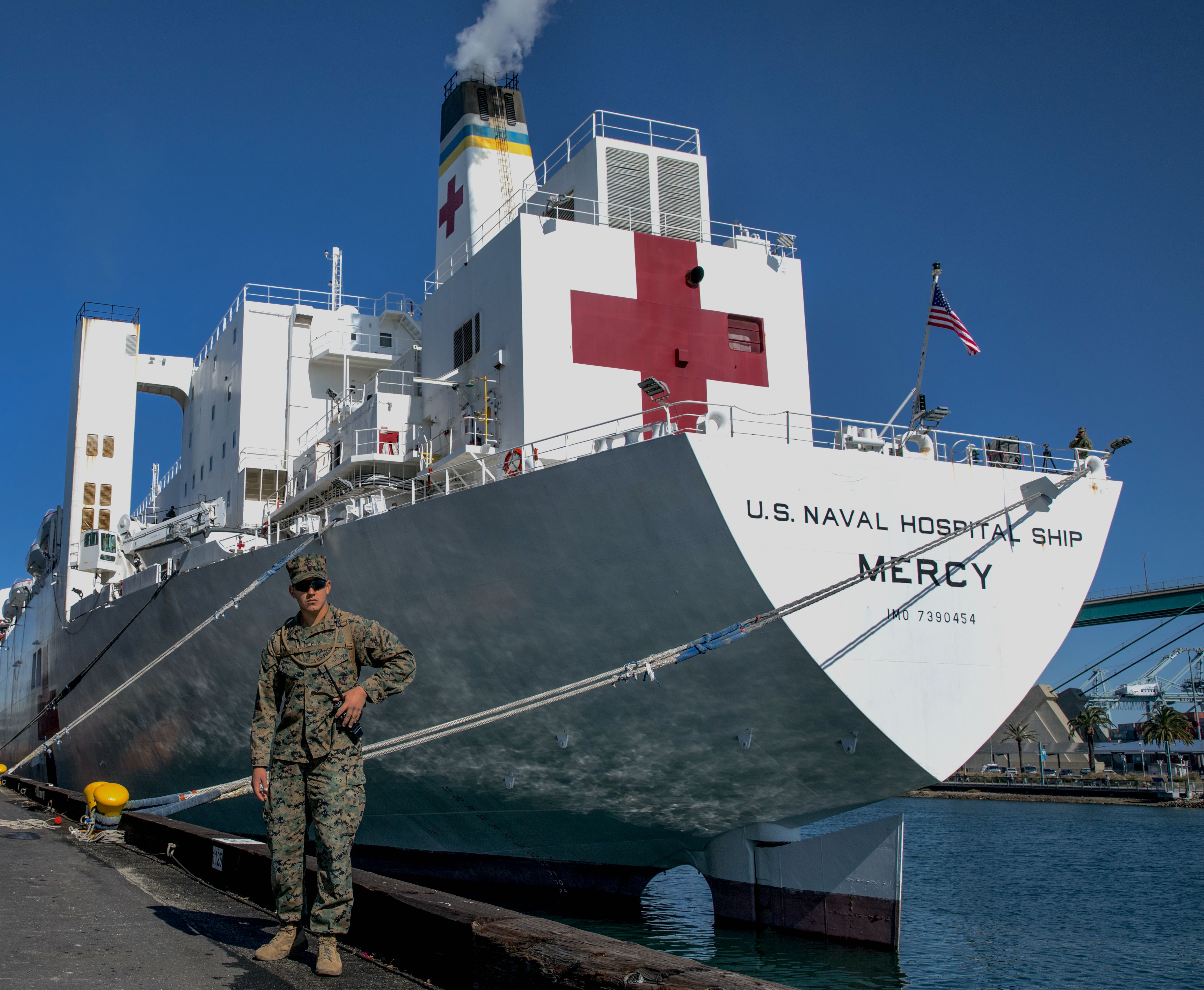
Also unclear is how long patients would remain aboard the ship. There’s “no specific limitation. As long as we’re here, they can be here,” Rotruck said. “We’re going to get some assistance from the local hospitals and the county to help with discharge planning, because that’s not a function that we typically do. Here, we are talking about discharging people home with the potential of home health services and durable medical equipment. That’s not a skill set that we generally have residing in uniform.”
Patients brought to Mercy will face the same visitation restrictions enacted at many medical treatment facilities across the country grappling with the COVID-19 outbreak.
“We have a strict no-visitor policy for the ship,” Rotruck said, but “we certainly want to make sure people get to stay in touch with their families.” Phones and internet access will be available for patients, he said, so they can call or text family members.
Restrictions also are in place for the 800-plus crew of enlisted sailors and officers and a handful of contractors, making Mercy their pier-side home for the foreseeable future. Also aboard are 76 civilian mariners, twice the ship’s typical crew when at home port. The crew is housed aboard in berthing spaces for enlisted sailors and staterooms for officers, as well as the crew of civilian mariners.
“Nobody is leaving the ship, and that’s a force health protection measure to make sure that we don’t inadvertently expose our crew to increased risk of COVID,” Rotruck said. “We’re going to do our very best to not introduce additional risk by bringing COVID onto the ship.”
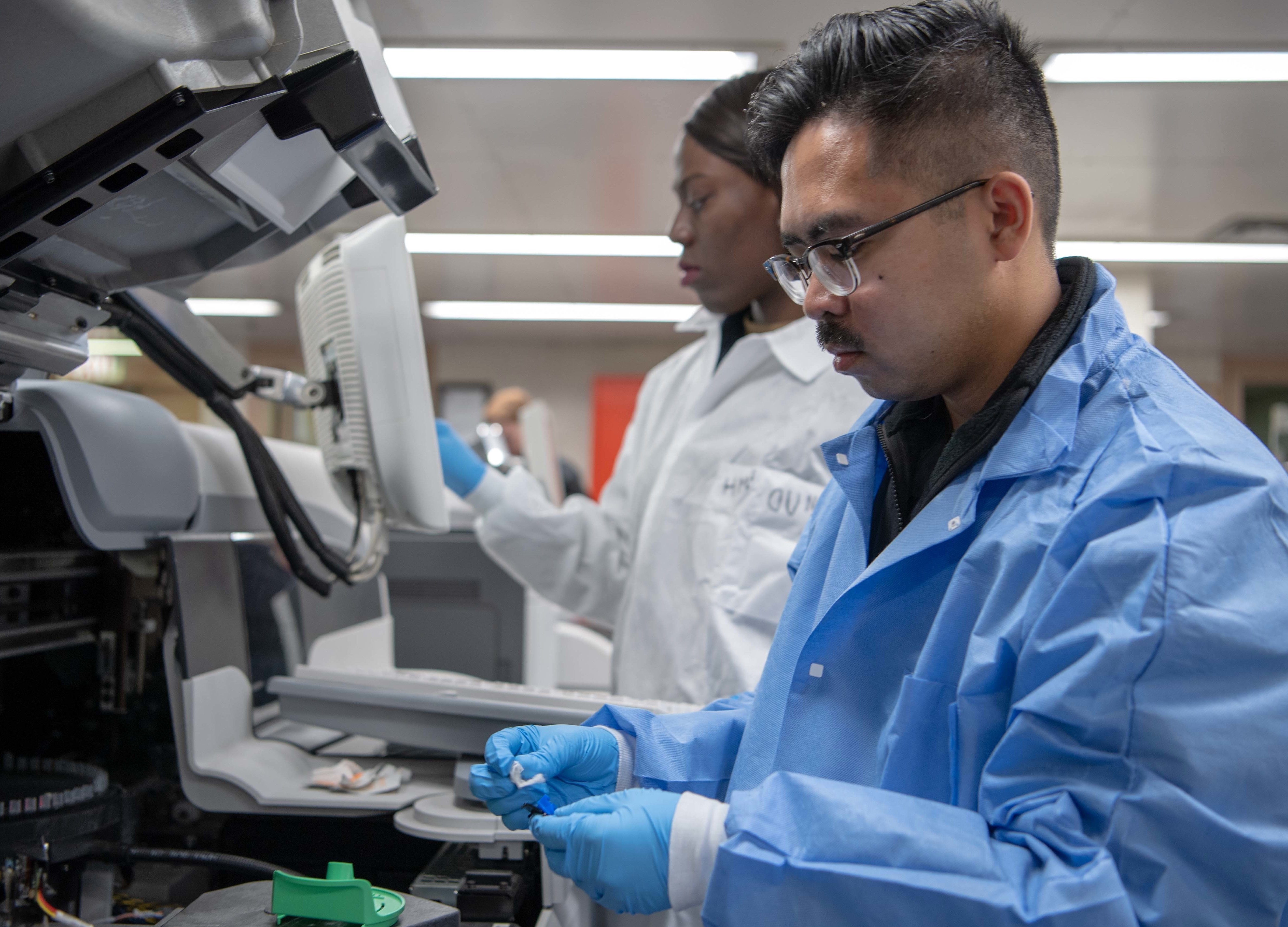
Rotruck said his message to the MTF crew, many who came from shore-based hospitals and clinics was to maintain the same standards for patient safety and high-quality care as if they were at their shore-based medical treatment facilities. “For all practical purposes, this is a hospital. It just happens to be sitting inside a large, steel ship instead of on a brick-and-mortar foundation,” he said. “We’ll run it the same way. We’ll have the same infection-control practices, the same patient safety and process improvement practices – basically the whole nine yards, every structure that exists within a shoreside hospital.”
“I can’t even begin to describe the enthusiasm they have to have come here to LA to serve our fellow Americans,” Rotruck added. “Mercy can do just about everything you need to take care of an adult patient. We’re happy to bring that skill set here to L.A. to offload the local health system and really enable them to focus their efforts on COVID-19 treatment. We’ll be here for as long as we’re needed.”





